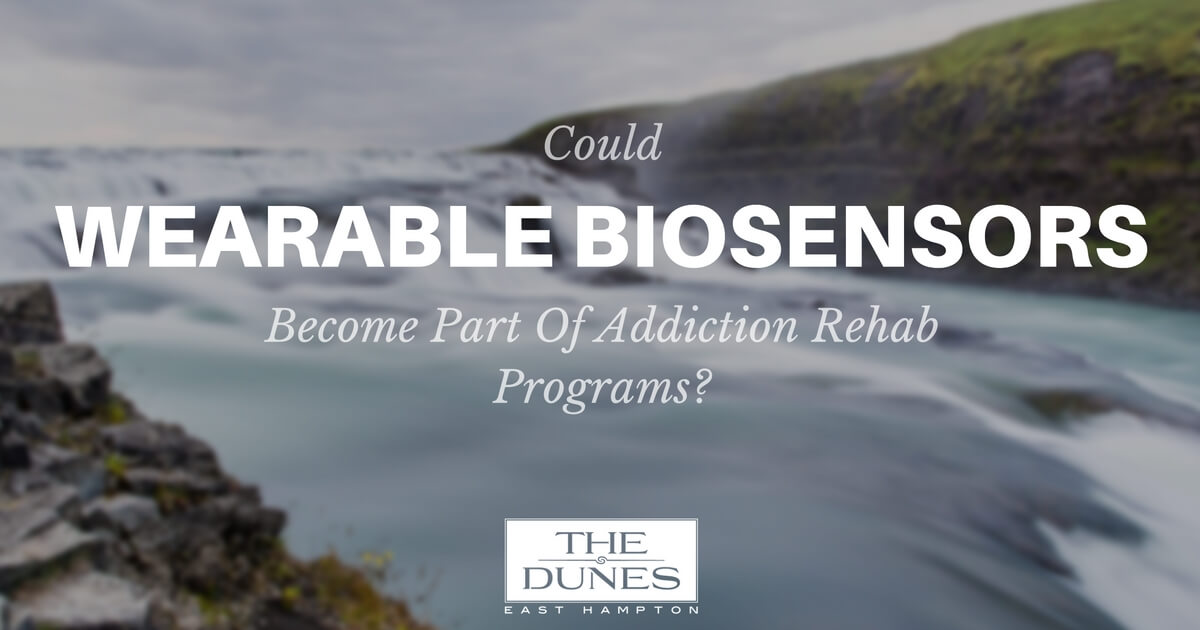
The number of people who experience a relapse after undergoing a substance abuse rehab program is troublingly high, between 50-90%, to be exact. However, experts do not believe that relapses are unavoidable, and that through the use of emerging technology we can predict and prevent future drug and alcohol use among recovering addicts. Wearable technology is making waves in the medical community, and addiction treatment specialist are looking into the technology’s potential applications in the recovery process.
Wearable Biomonitoring Tools
Wearable biomonitoring devices can be used to identify when someone is feeling anxiety and stress, emotions that commonly spark the urge to use drugs and alcohol. Using wearable technology to warn recovering addicts that their mood is shifting may seem unnecessary, after all, don’t we immediately recognize the warning signs ourselves? The simple answer is no. Research shows that we are shockingly bad at recognizing our internal states of mind
Biomonitoring devices work by measuring various biological responses to stress and anxiety. For example, stress responses such as increased heart and pulse rate, skin conductivity, and muscle tension can all be measured with wearable wristbands, and the information can be sent to the wearer’s cellphone. There are even technology companies that plan to integrate microsensors into athletic clothing to aid in sports training, which can be easily adjusted to work for recovering addicts.
Now, standard biomonitoring alone is not a perfect solution. An elevated heart rate can just as easily be caused by positive emotions, like excitement and arousal. Still, this information can serve as a sort of warning sign, allowing a recovering addict’s sponsor or therapist to check-in on them before the desire to relapse becomes irresistible. However, as technology progresses, we are getting better and better at isolating the unique variables that indicate that one is using drugs and alcohol.
Wearable Technology Recognizes Opiate Use
In a recent study, a team of researchers sought to uncover the efficacy of wristband biosensors for detecting the presence of opioid painkiller drugs in the body. The group of scientists selected 30 patients who had been admitted to the emergency room and administered intravenous opiate analgesics to help treat their pain. After receiving the painkillers, each patient was to wear a wristband biosensor capable of collecting various biometric data points.
After analyzing the data collected by the biosensor wristbands, the research team was able to successfully identify when each patient was injected with the opioid painkillers. The metrics that were used in this analysis included increased skin temperature, slowed heart rate, and reduced body movement. The author of the study, Dr. Stephanie Carreiro, believes that this technology can potentially track opioid use in real time, which has multiple benefits for those in the word of addiction treatment. In the future, these wristbands could be modified to communicate with a recovering addict’s family members and doctors to alert them of a potential relapse.
Perhaps the biggest selling point of this wristband biosensor is the fact that it is completely noninvasive, and does not require any trips to the doctor to use. While this feature is beneficial in many ways, it also raises a few potential concerns. For instance, the monitor only works while being worn, so an addict could simply remove the device to avoid triggering any alarms. Regardless, both law enforcement agencies and addiction treatment programs have expressed great interest in including this technology in their drug use monitoring arsenal.
Embedded Microchips For Addiction Treatment
Another promising new technology that has the potential to be used in relapse prevention therapy is implanted microchip sensors. Rather than being worn on the skin’s surface like the previously discussed wristband biometrics monitor, these sensors are surgically implanted in the body. While the idea of implanted microchips may at first seem like a science fiction nightmare, this technology has numerous advantages over other less invasive options.
Subcutaneous implants are capable of measuring various biomarkers in the blood in addition to other standard metrics like heart rate, temperature, body motion, etc. for example, these microchip sensors can potentially check for elevated cortisol levels in the blood, which is a common indicator of stress and anxiety. By tracking cortisol levels in real time, addiction treatment therapists can be alerted of a potential relapse, and intervene quickly with healthy stress management techniques such as meditation and exercise. These sensors can even send wireless alerts to an addict’s recovery sponsor, making microchip implants a potential solution for those who require around the clock monitoring.
While implanted microchip technology is still in the theoretical and experimental stages of development, experts are already intrigued by the possibilities. For example, these implants could be programmed to administer pharmaceutical stress relief drugs when they detect a spike in stress hormone levels. While the general public may hesitate to adopt such an invasive treatment option, recovering addicts desperate to control their cravings stand to benefit greatly.
Wearable Brain Imaging Technology
Every year, scientists uncover more and more of the mystery that is the human brain. Through technologies such as functional magnetic resonance imaging (fMRI) to positron emission tomography (PET), we are beginning to paint a vivid picture of how the brain operates and responds to external stimuli. Experts are confident that we will eventually be able to pinpoint the exact brain regions responsible for addictive cravings, and that these regions can be monitored for the warning signs of a relapse.
While current brain imaging devices are too large to be used as a wearable technology, advances in mobile brain imaging are happening every year. Functional near-infrared spectroscopy shows promise as a potential method of mobile brain imaging, and can be integrated into something as small as a headband. While this technology is still in its infancy, continuous brain monitoring remains one of the most promising potential tools in the fight to maintain sobriety.
The Future Of Relapse Prevention
There are proven therapeutic methods that can help recovering addicts resist the urge to use, but the issue remains applying treatment when it is needed most. The use of wearable biosensors in substance abuse treatment programs remains an exciting prospect for just this reason. In time, we will see if wearable technology is, in fact, the revolution we have been waiting for.
Want to read more newsworthy posts? Click below and get caught up on all the new and exciting ways were stopping addiction in its tracks.







